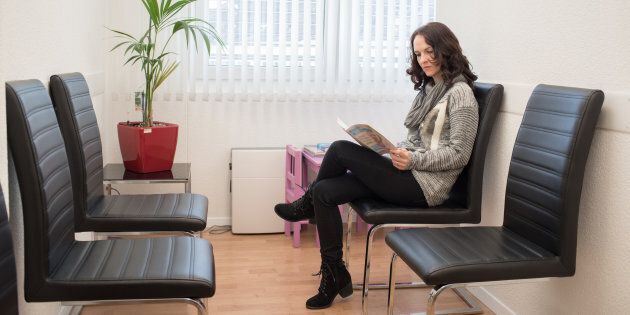
Adenomyosis is the lesser known 'relative' of endometriosis. It occurs when the cells of the lining of the uterus (the endometrium) break through the uterine muscle wall (the myometrium), causing debilitating pain, heavy bleeding, blood clots, infertility, painful sex, bloating, and other symptoms.
Adenomyosis is suggested to affect 20-35 percent of women. It's progressive and causes severe cramping and sharp, knife-like pains, and some women have to sacrifice having children to live a pain-free life as a hysterectomy is often the ultimate cure. This is devastating for young women to have to deal with. Many women I have spoken to have taken hormonal drug treatments such as the contraceptive pill or a hormonal IUD to try and maintain their fertility, which can have side effects for some women including more pain and more bleeding.
I had pain every day. I had to take four-hourly pain meds daily to get through. I couldn't spend time with my kids and cancelled catch ups with friends, having to curl up on the couch with a heat pad and heavy painkillers.
I was a lucky one -- I'd already had my children when I was diagnosed in April 2016 with severe period pain and pregnant-like bloating. Initially, the words 'suggestive of adenomyosis' on my ultrasound was dismissed by the gynaecologist, and so were my symptoms. I was told to go back to my GP and get a colonoscopy, as he didn't think it was a gynaecological issue.
The colonoscopy was all clear, and things seemed to settle. I didn't bother looking up adenomyosis, but I wish I did. I should've educated myself.
Fast forward to August and the early labour-like painful periods started up again. By September, it had progressed to painful ovulation, and by October, I had pain three out of four weeks a month. I tried acupuncture. I stopped drinking soy milk and coffee. It didn't work.
By November I had pain every day. I had to take four-hourly pain meds daily to get through. I couldn't spend time with my kids and cancelled catch ups with friends, having to curl up on the couch with a heat pad and heavy painkillers. My very supportive husband had to take over doing everything -- housework, cooking, and ferrying the kids around.
I saw a new gynaecologist who said it was 'protocol' to try a hormonal IUD before such radical surgery as a hysterectomy. I reluctantly agreed, as synthetic hormones (the pill) had never agreed with me in the past. My gynaecologist said 90 percent of other gynae's would say that, too. We booked in a hysterectomy for April 5 (during the school holidays, as I'm a teacher) in case the IUD didn't work. She told me it had a 30-40 percent chance of working.
The IUD made me worse. I still got periods and they were horrendous. I would cry and my husband would hold my hand not knowing what to do. I bled constantly, so I was put on progesterone tablets. They didn't work either.
I had to take time off work due to the pain and I was at my lowest. I called the hospital fighting back tears asking to be put on the 'anytime from now' waiting list for surgery. My gynae worked publicly once a month, so I knew her next time would be March 8 -- ironically, International Women's Day.
I got a call two days later. Yes, they could book me in March 8, with my gynae. More tears, but of relief and joy. I didn't care who did the most important surgery I'll most likely ever have, but I was blessed when I was put on my gynae's list. I trusted her. According to my doctor, if I'd gone privately it would've cost us $10,000.
When adenomyosis is mentioned to family and friends, or even some medical professionals, it's often met with "ad...what?"
I'm a 45-year-old preschool teacher, and I have two sons and a stepdaughter. Due to the hysterectomy four weeks ago I am finally adenomyosis pain free. My surgeon said I'd made the right decision, as nothing else would have helped me by the look of my enlarged and diseased uterus.
It's not a condition that kills, but it affects 20-35 percent of women and causes chronic and debilitating pain, and people should care about that. When adenomyosis is mentioned to family and friends, or even some medical professionals, it's often met with "ad...what?!" The more this condition is talked about the better.
Painful periods are not normal, nor is bloating, heavy bleeding, clots and pain all month. Unfortunately, some medical professionals are still dismissing these symptoms as 'women's issues', or 'it's all in your head'.
______________
Throughout 2017, The Huffington Post Australia is running a series called No Two Women. The series will cover everything women, and men, need to know about what women deal with thanks to their hormones.
We want to hear about your experiences, and about what you want to read. Let us know by emailing notwowomen@huffingtonpost.com.au or contribute a blog post by emailing blogteam@huffingtonpost.com.au
ALSO ON HUFFPOST AUSTRALIA